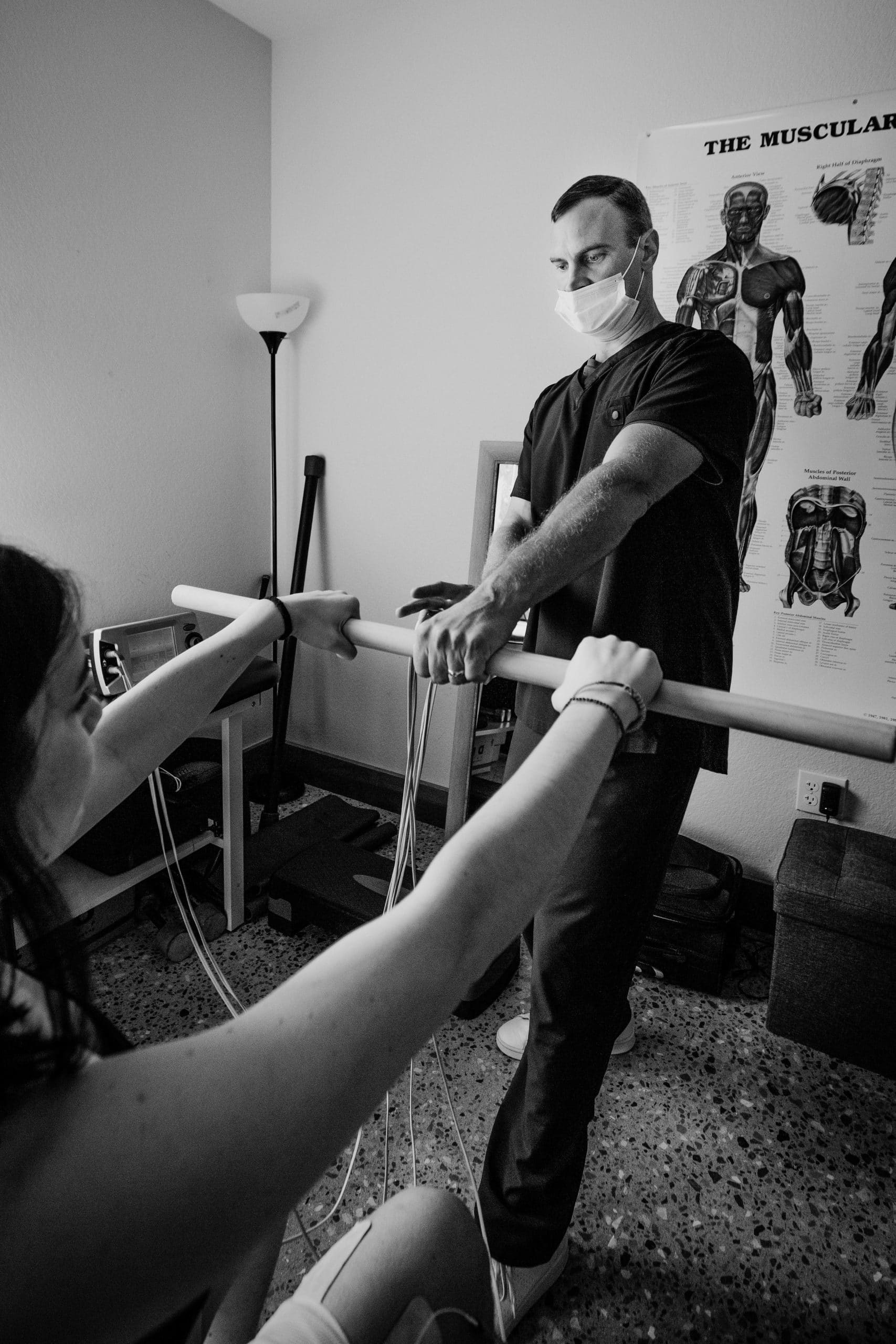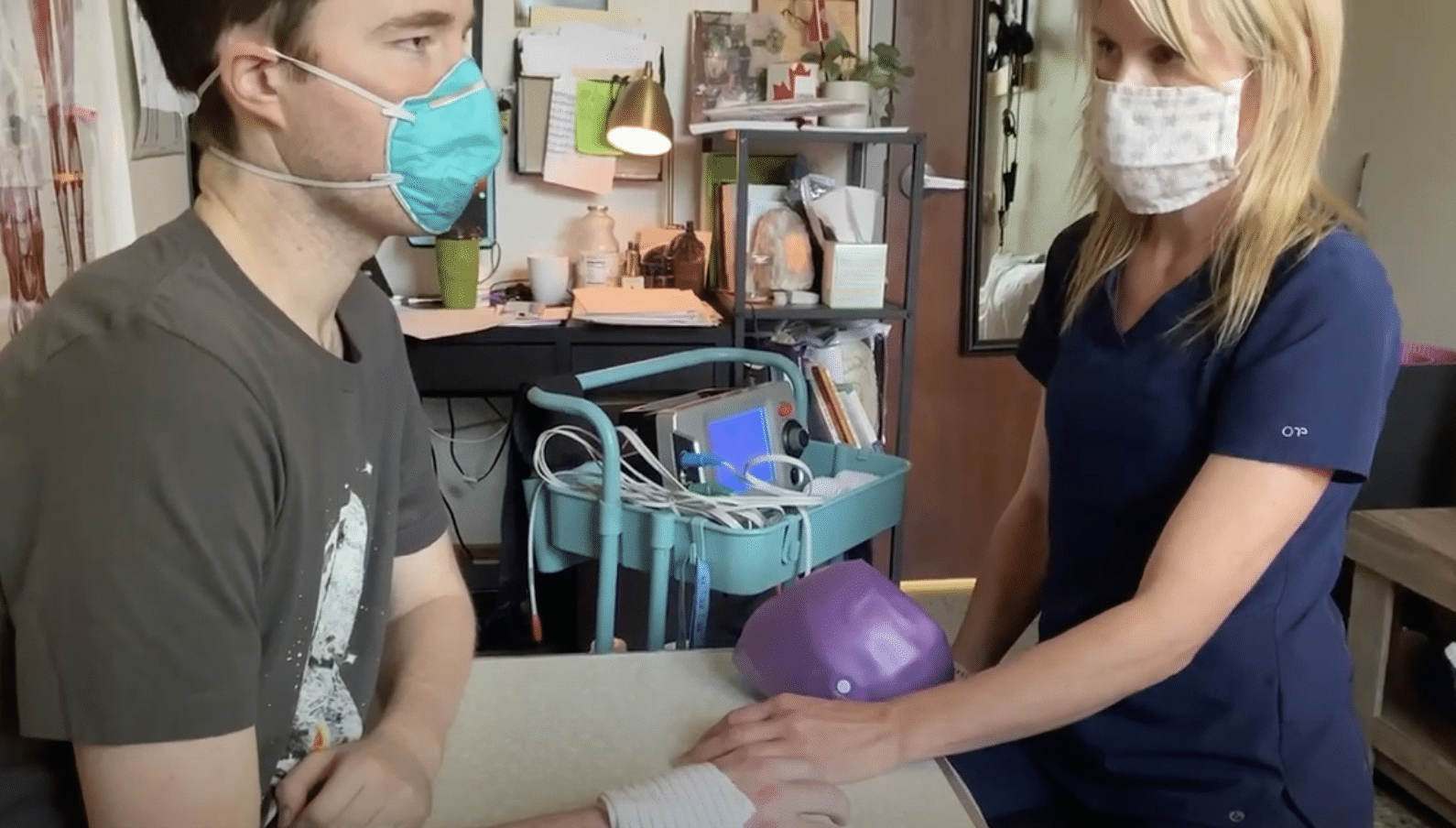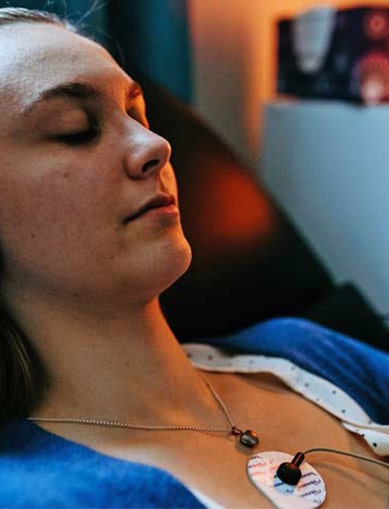Current Diagnosis Methods of CRPS
The Most Confusing Part: Obtaining A Diagnosis
It is very difficult to find a doctor who is knowledgeable in recognizing and correctly diagnosing CRPS. Except for the lucky few, most CRPS patients may go many months or even years before they are correctly diagnosed with CRPS. If caught early, before brain, nerve and tissue changes set in, it is much easier to treat CRPS. For this reason, it is a true tragedy that some patients have to fight so hard to obtain a proper diagnosis. Although there is no one single definitive test for CRPS, there are a few things doctors look for when diagnosing this condition, and tests that help them to do so. If a patient is lucky, they will cross paths with a doctor well-trained in the diagnosis and treatment of CRPS (most often a neurologist or anesthesiologist).
If a physician or physical therapist is not familiar with spotting and/or treating CRPS patients then serious problems and setbacks can sometimes result. CRPS is one of those diseases where doing the wrong thing is often worse than doing nothing. As I mentioned above, the first year after the symptoms of CRPS first present themselves is like a golden window, as it is much easier to beat CRPS into remission during this period. After time goes by, certain physiological and anatomical changes make it a bit more challenging to beat the monster.
Diagnosis of CRPS is based on a physical exam and your medical history. Again, there’s no single test that can definitively diagnose CRPS, but the following procedures may provide important clues:
The Three-Phase Bone Scan
The three-phase bone scan has been used since the mid-1970s to diagnose CRPS. An intravenous(IV) injection of a particular radiolabelled substance that has a special tendency to concentrate in the bones is administered and a technician takes images of the body part in question, looking for the initial phase of ‘blood flow’. Immediately, he will look again for the second phase of ‘blood pool’. Finally, approximately 2 hours later, images will show the concentration of the radiolabelled material in the actual bones; this is the ‘delayed phase’.
It has been observed that there is a characteristic pattern of activity in the involved CRPS limb, which in the early 1980s was described as ‘pathognomonic’ -a sign or symptom upon which a diagnosis can be made- in this case of CRPS. There are some drawbacks to this test. There is no available data on how many of these patients who had a limb trauma, but no CRPS symptoms, had an abnormal bone scan as well. In addition, only 16 percent of the patients diagnosed with CRPS 8 weeks after trauma had the characteristic bone scan pattern. To add to the confusion, a sympathectomy itself produces a pathognomonic CRPS bone scan. A sympathectomy is the removal of a single sympathetic nerve, or a group of sympathetic nerves in order to relieve pain. Many patients who suffer from CRPS have had this procedure done.
X-Rays
X-rays are often used to diagnose complex regional pain syndrome (CRPS). X-rays may be used to identify signs of CRPS in the bone, such as loss of bone minerals, common in CRPS. X-rays may also be used to rule out other conditions which may potentially contribute to the patient’s symptoms. As with several other diagnostic tools, x-rays typically cannot act as a stand-alone tool in the diagnosis for CRPS. Therefore, X-rays are often used in conjunction with other forms of diagnostic testing.
CRPS And Bone Loss
It is common for patients with CRPS to experience a decrease in bone mineral density. This bone loss typically occurs in the later stages of CRPS, three to twelve months after the onset of the condition. X-rays will typically appear normal during the first three months of CRPS. When CRPS affects the patient’s bone, osteopenia occurs. Osteopenia is a condition that causes lower-than-normal bone density. In many cases, osteopenia is considered a precursor to osteoporosis.
Thermogram
A thermogram is a noninvasive means of measuring heat emission from the body surface using a special infrared video camera. It is one of the most widely used tests in suspected cases of CRPS. As noted, detecting an abnormal change in skin temperature in CRPS depends on many factors. A normal thermogram does not necessarily mean the patient does not have CRPS. An abnormal thermogram may, however, be helpful when there are minimal objective findings for a diagnosis of CRPS documented in the medical record. Furthermore, certain patterns of abnormal heat emission from the body (e.g. circumferential versus dermatomal changes) are more indicative of the existence of CRPS than others. The thermogram should be performed at a reputable medical facility. The quality of the test may vary among providers.
About 80% of CRPS patients have differences in temperature in opposite sides that may be either colder or warmer. These temperature changes may be associated with changes in skin color. Furthermore, the temperature differences are not static. The skin temperature can undergo dynamic changes in a relatively short period of time (within minutes) depending critically on room temperature, local temperature of the skin and emotional stress. In some cases, the differences in temperatures may fluctuate spontaneously even without any apparent provocation.
Neurologic Tests
The typical neurologic tests used to diagnose nerve injuries involve electromyography (EMG) and nerve conduction techniques that measure major motor or sensory nerve changes. A nerve conduction study (NCS), also called a nerve conduction velocity (NCV) test–is a measurement of the speed of conduction of an electrical impulse through a nerve. NCS can determine nerve damage and destruction.
During the test, the nerve is stimulated, usually with surface electrode patches attached to the skin. Two electrodes are placed on the skin over the nerve. One electrode stimulates the nerve with a very mild electrical impulse and the other electrode records it. The resulting electrical activity is recorded by another electrode. This is repeated for each nerve being tested. The nerve conduction velocity (speed) is then calculated by measuring the distance between electrodes and the time it takes for electrical impulses to travel between electrodes.
A related procedure that may be performed is electromyography (EMG). An EMG measures the electrical activity in muscles and is often performed at the same time as NCS. Both procedures help to detect the presence, location, and extent of diseases that damage the nerves and muscles. A fine needle electrode is inserted into the muscle tissue and electrical activity is studied. This procedure has been reported by my CRPS patients as especially painful. In my opinion, anything that involves insult to the sensory nervous system of a CRPS patient, such as a needle entering the body, should be avoided except for in life-threatening situations.
Unfortunately, the small-fiber nerve injuries in CRPS are not detected by these standard tools, which only measures large-fiber function. The difficulty in measuring small-fiber damage led one doctor (Dr. Oaklander) and her colleagues to propose a skin biopsy for the detection of CRPS. Skin biopsy, a procedure in which a sample of skin tissue is removed and examined, provides a very sensitive method for detecting small nerve fiber damage. According to Dr. Oaklander, skin biopsies are actual windows into the peripheral nervous system, showing detailed changes associated with CRPS.
In her study, small skin samples were taken from 18 adults with CRPS-I and seven people who had chronic pain from osteoarthritis, but not CRPS. Each subject identified the location of his or her maximum pain, a nearby symptom-free area on the same limb, and a pain-free area on the opposite limb. Skin biopsies were then taken from all three spots and the density of tiny projections extending from each nerve cell (small nerve fibers, or neurites) was measured. The results showed a decrease in the number of neurites in the CRPS-affected regions only. On average, about 30 percent of the neurites were missing in the CRPS affected limbs. It is further theorized that he loss of neurites may cause the pain of CRPS by triggering a hyper-response on the part of the remaining neurons. This method is not yet in widespread use. In addition, there is the obvious drawback that removing a sample of skin from a CRPS patient is in and of itself an invasive procedure, always to be avoided in CRPS cases when possible.
Physical Exam
The value of a thorough physical exam by a doctor who knows what to look at cannot be overestimated. The typical CRPS patients will often give off physical clues that may seem small, but, in fact, may be crucial in obtaining the best diagnosis. A good exam starts with a thorough history taken by someone who really listens to the patient. Patients will report and demonstrate sensitivity to light touch, deep touch, pain, vibration, circumferential pressure, cold, heat, and increased pain when bad weather comes in. They will often report that the touch of clothes, shoes, carpet underneath bare feet, showers, etc. There are some clues that can be seen by visual observation alone, such as soft tissue edema and enhancement, skin thickening, color changes, changes to the nails and/or hair, skin rashes and wounds and muscle atrophy in later stages. In addition, patients who suffer from CRPS will show abnormalities of the III, VII, IX and X (parasympathetic) cranial nerves.
It is very difficult for any doctor when they are faced with a desperate patient, wanting an objective reason for why he or she is hurting. The current diagnostic tools are mere guides. The most important factor in every diagnosis is to get yourself to a doctor well familiar with the signs and symptoms of CRPS. A keen eye and experience cannot be recommended strongly enough when it comes to CRPS. If you have the smallest suspicion that your doctor is unfamiliar with CRPS and its presentation, you must fire that doctor immediately. Do not waste any time in obtaining a correct diagnosis. Time is very, very critical and not on your side.
I ran across the following quote on the RSDHope.org page that I found to be very true and wanted to share with you: “Just because you can’t find the exact source of someone’s pain doesn’t mean they don’t feel it,” says John F. Dombrowski, MD, a Washington, D.C. pain specialist. “No test can measure the intensity of pain, no imaging device can show pain, and no instrument can locate pain precisely. This doesn’t mean pain can’t be treated. “We don’t need to know the exact cause of the pain to try to make it feel better.”
Complex Regional Pain Syndrome Treatment Center – The Spero Clinic
The Spero Clinic focuses on treating the pain as a whole and has successfully helped CRPS patients enter remission. We don’t use opioids and refuse to mask the pain. Our goal has been and will always be to use non-invasive treatment methods to help patients lead pain-free life. Contact us today.







